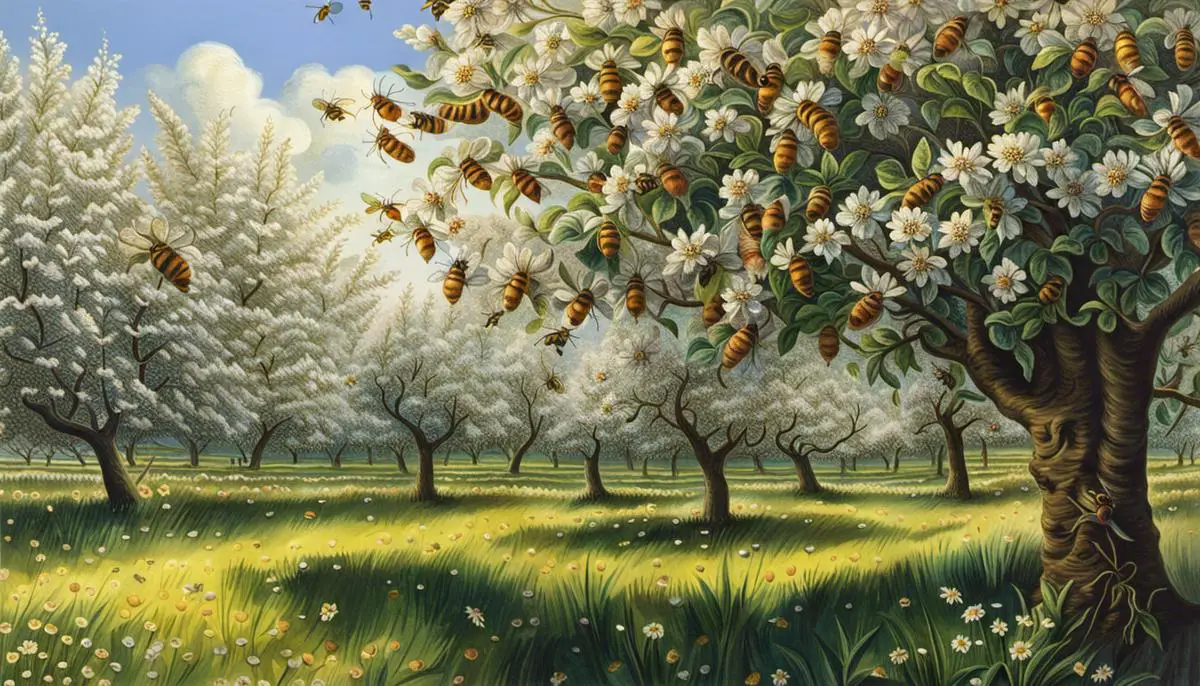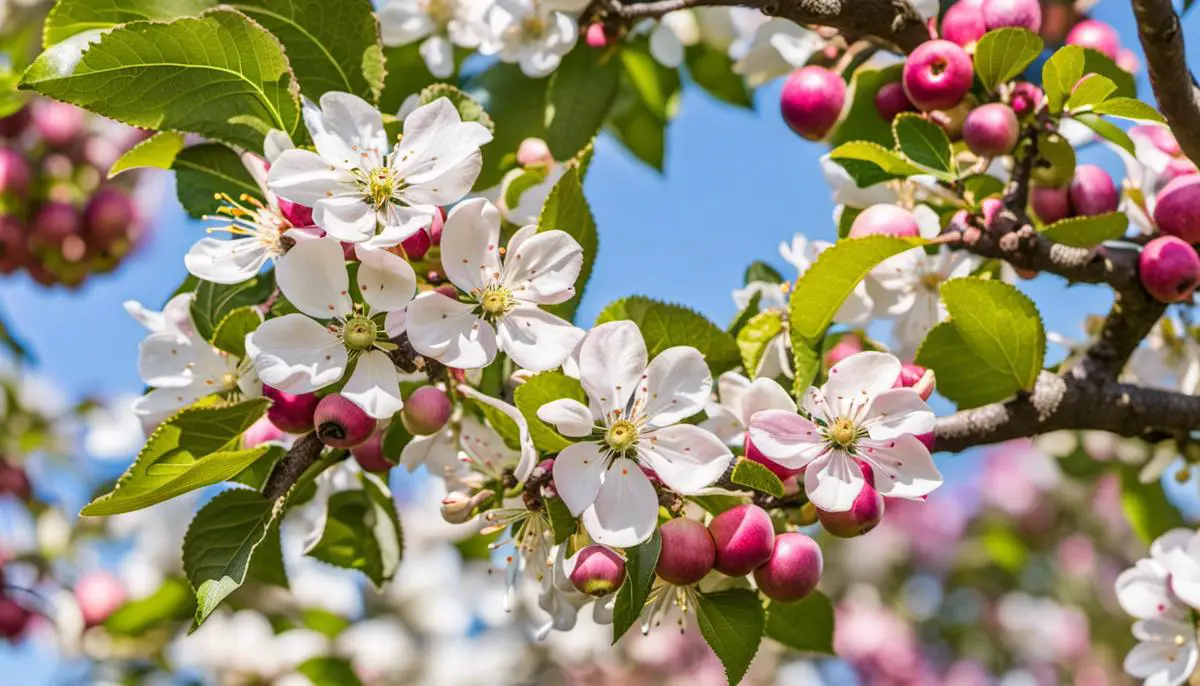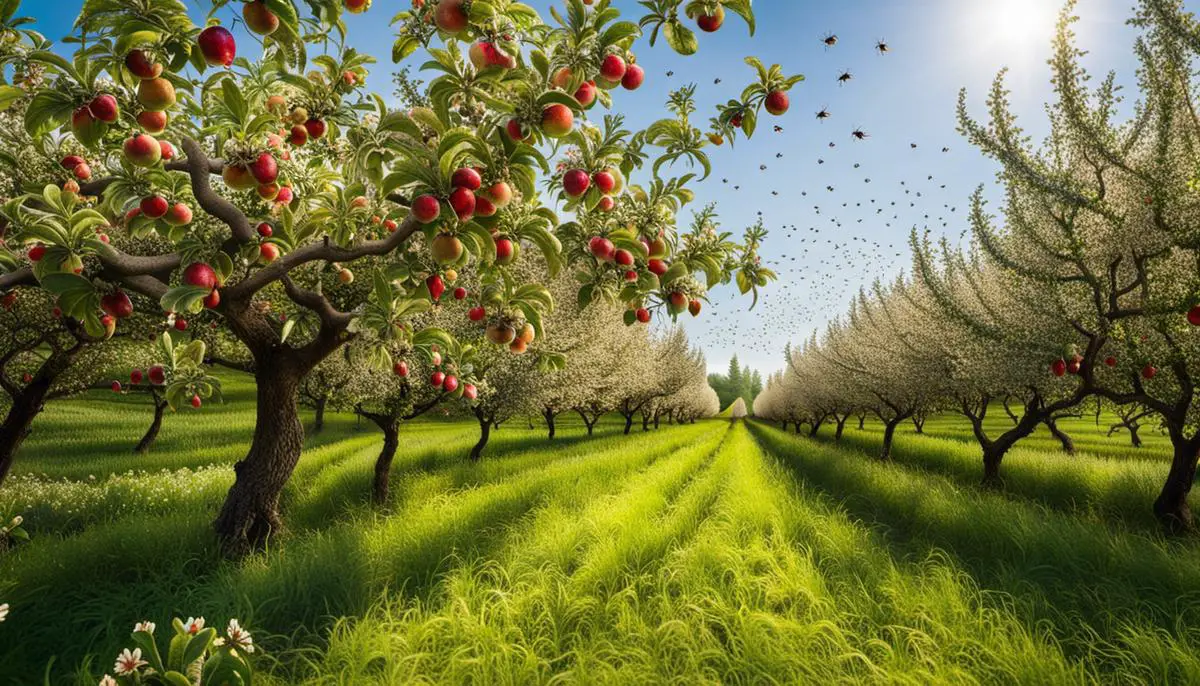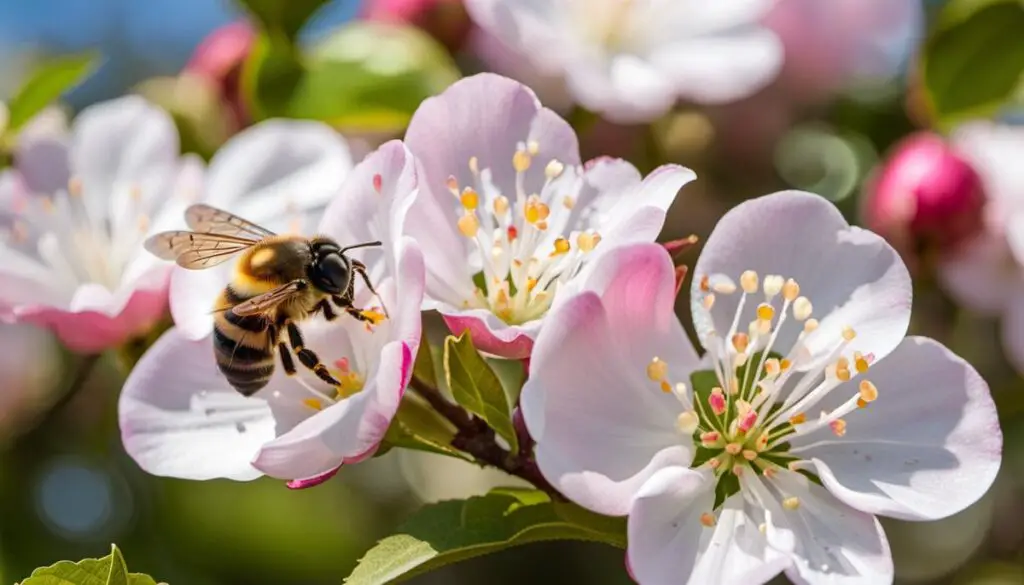Apple trees, known for their vibrant blossoms and juicy fruits, are at the center of a fascinating process known as cross-pollination. This mechanism, critical for fruit production, involves the transfer of pollen from one tree to another, facilitated by diverse varieties of pollinators such as bees. This essay will deeply delve into the intricacies of pollination, highlighting its significance in apple tree propagation. A robust examination of various apple tree varieties will be undertaken, distinguishing their differing bloom periods and how these periods influence the effectiveness of cross-pollination. Lastly, the spatial logistics of planting apple trees to promote healthy cross-pollination will be explored, stipulating the ideal conditions that ensure these trees flourish and produce a bountiful crop.
Understanding Pollination
Understanding the Science of Pollination
Pollination is a key biological process in the cycle of life for many plants and fruits. It refers to the transfer of pollen from the male parts of a flower (anthers) to the female parts (stigma) of the same species. This process is crucial for the fertilization of the plant, which leads to the development of fruits and seeds.
Significance of Pollination in Fruit Production
Fruit production is directly dependent on successful pollination. In the case of apples, each flower must receive pollen from a different variety of apple trees to allow the fruit to set. This is known as cross-pollinating, an essential factor in producing a high yield of quality apples. If pollination is poor or does not occur, the flower will not be fertilized and will simply fall from the tree without producing fruit.
Why apple trees need cross-pollination
Apple trees generally cannot self-pollinate, meaning they require cross-pollination. A majority of apple trees are self-incompatible, they cannot use their pollen to fertilize their flowers. This is why apple trees are usually planted in groups and different varieties are mixed together. These trees need to be within 50 feet, although closer is better, to pollinate.
Role of Bees in Apple Tree Pollination
The primary pollinators for apple trees are bees. These buzzing insects play a vital role in transferring pollen from one apple tree to another. As the bees buzz from flower to flower collecting nectar, pollen sticks to their bodies. When they visit the next flower, some of this pollen brushes off onto the stigma, completing the pollination process. This exchange is critical to apple production and bees are so efficient that it typically requires only a single visit by a bee to a flower for complete pollination. Effective pollination can result in apples that are larger, less misshapen, and have a longer storage life.
Optimizing Pollination for Apple Trees
While bees typically do much of the work for apple tree pollination, there are a few ways you can optimize this process. Including a variety of apple trees in one area can significantly improve pollination because this gives bees even more opportunities to transfer pollen. If you’re space constrained, grafting different varieties onto a single trunk can also serve this purpose. Another way to help is by making your garden bee-friendly. This includes avoiding the use of pesticides and providing a water source and wildflowers for the bees.

Apple Tree Varieties and Blooming Periods
Understanding Apple Tree Varieties
Apple tree varieties have a vast range, with over 7,500 known types around the world. Popular types in the United States include ‘Golden Delicious’, ‘Red Delicious’, ‘Fuji’, and ‘Granny Smith’. Each variety has a different blooming period, which typically falls into one of three classes: early, mid, and late season. ‘Red Delicious’ is considered a mid-season bloomer, while ‘Granny Smith’ blossoms later in the season. When taking pollination into consideration, considering the blossom periods of different apple trees is important to ensure successful cross-pollination.
Apple Tree Bloom Times
Each apple tree variety will bloom at a different time during the spring season. Early blooming varieties, like ‘Jonathan’ and ‘McIntosh’, typically start in April depending on your region’s climate. Mid-season bloomers, like ‘Red Delicious’ and ‘Honeycrisp’, usually start blooming in May. Late bloomers, such as ‘Rome’ and ‘Granny Smith’, arrive often in late May or early June. It’s important to note, bloom times can vary based on regional conditions and specific weather patterns in a given year.
Good Pollinators for Apple Trees
While all apple trees produce flowers that contain both male and female parts, meaning they have the capacity to self-pollinate, cross-pollination between different apple varieties generally leads to better fruit production. Varieties like ‘Crabapple’, ‘Golden Delicious’ and ‘Jonathan’ are considered good pollinators because they produce a lot of flowers over a prolonged bloom time, increasing the likelihood of successful cross-pollination.
How to Match Apple Tree Varieties for Effective Cross-Pollination
Proper cross-pollination requires two different apple varieties that bloom at the same time. For example, if you have a ‘Red Delicious’ tree, plant a ‘Golden Delicious’ nearby because they bloom around the same time. On the other hand, a ‘Granny Smith’ tree, which blooms late, would be better paired with a similarly late blooming ‘Rome’.
Distance Between Apple Trees for Pollination
The distance between apple trees for effective pollination depends on how they are pollinated. Bees are the most common pollinators for apple trees, and they can travel significant distances, usually up to about 100 yards. Therefore, planting apple trees within 50 feet of each other generally provides good results, but the closer the better. However, cross-pollination is still possible if the trees are further apart, but the chances of successful cross-pollination decrease.

Spatial Planning for Apple Orchards
Understanding Optimal Distancing for Apple Tree Cross-Pollination
Apple trees benefit greatly from cross-pollination to produce generous yields of fruit. For the average home orchard, apple trees must be at least 20-50 feet apart for optimal cross-pollination. This distance encourages bees and other pollinators to move freely between the trees, helping to mix pollen from different trees. Remember that this optimal distance can vary depending on the specific variety of apple trees, the local climate, and soil conditions. Always check with a local extension service or nursery when you’re choosing and planting apple trees.
The Impact of Spacing on Pollinator Movement
Pollinators, such as bees and butterflies, play a critical role in apple tree’s fruit production. The space between the trees in an orchard can impact the movement and activity of these pollinators. Dense spacing can make it difficult for pollinators to find their way between trees, potentially reducing the efficiency of pollen transfer. On the other hand, excessive spacing might discourage pollinators from traveling to the next tree, especially if other food sources are closer by. Therefore, providing an optimal space between apple trees helps to encourage and maximize pollinator movement.
Why Distance Matters for Tree Health
Tree health can also be influenced by spacing. When apple trees are planted too closely together, they have to compete for light, water, and nutrients, which can lead to slower growth and lower yields. Overcrowding can also increase the risk of disease transmission between trees. On the other hand, if trees are spaced too far apart, resources can be wasted. Sunlight might not be fully utilized by the trees, and more space means more maintenance like mowing or weeding. Therefore, finding an optimal balance for distances can promote tree health while maximizing the use of space and resources in your orchard.
Planning Your Apple Orchard for Maximum Pollination Success
To plan for maximum pollination success, you must consider not only the optimal distance between the trees but also the arrangement of the trees themselves. Apple trees of different varieties should be planted in alterning rows so that cross-pollination can occur more easily. Also, consider access to sunlight for all trees and try to orient your orchard to take advantage of prevailing wind directions to aid pollinator movement. It can also be helpful to plant a variety of different apple cultivars, which can help attract more diverse pollinators and extend the flowering period of your orchard, increasing your chances for successful pollination.
Finally, consider investing in a small number of pollinator attractors, such as bee hives, to increase the likelihood of successful pollination.

There’s a considerable complexity to the planting and successful growth of apple trees. It can be observed from the extensive exploration of pollination processes, varieties of apple trees, and orchard spacing. Unraveling these intricacies provides an understanding that effective cross-pollination is a product of various factors. These include an optimal mix of apple tree varieties, strategically planned bloom periods, and carefully managed orchard spatial planning. By embracing these considerations, the potential for fruitful apple yield is remarkably heightened, underscoring the importance of embracing scientific agricultural principles in our farming practices.

